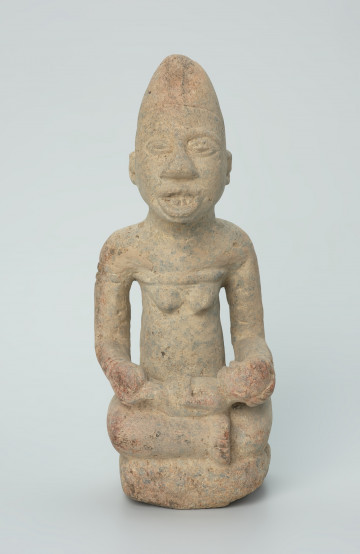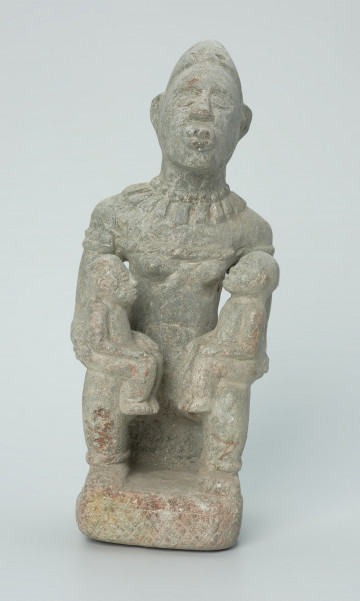
Ancestor worship figure
około 1901 — 2000
National Museum in Szczecin
Part of the collection: Mintadi figurines
Mintadi (singular ntadi) are stone carvings usually made from chlorite slate, a soft rock that is easily worked. They are associated with the tradition and culture of the Kingdom of the Congo, established in the 14th century in the lower reaches of the Congo River (present-day northern Angola, Republic of the Congo, the western Democratic Republic of the Congo). These figures were already known in Europe in the 17th century when they were brought by Italian missionaries working in the Kingdom. They were then donated and displayed in the Luigi Pigorini National Museum of Prehistory and Ethnography in Rome. Mintadi were mainly used to decorate the tombs of notables of the Kingdom of Congo. Different types of mintadi are known: mfumu - a ruler who is identified by the insignia of power, including a pipe, a staff, a cap, or depicted as fumani - a thinker who sits with his legs crossed and his head resting on one hand, a lower dignitary who is usually depicted in an attitude of respect and submission, and a woman with a child or children.Most mintadi are surrogates for a ruler still alive but temporarily absent and effigies of deceased dignitaries. They are objects that ensure continuity and permanence of power.
Katarzyna Findlik-Gawron
Author / creator
Dimensions
cały obiekt: height: 19,6 cm, width: 13,5 cm
Object type
sculpture
Creation time / dating
Creation / finding place
Identification number
Location / status

około 1901 — 2000
National Museum in Szczecin

około 1901 — 2000
National Museum in Szczecin

około 1901 — 2000
National Museum in Szczecin
DISCOVER this TOPIC
Museum of King Jan III's Palace at Wilanów
DISCOVER this PATH
Educational path